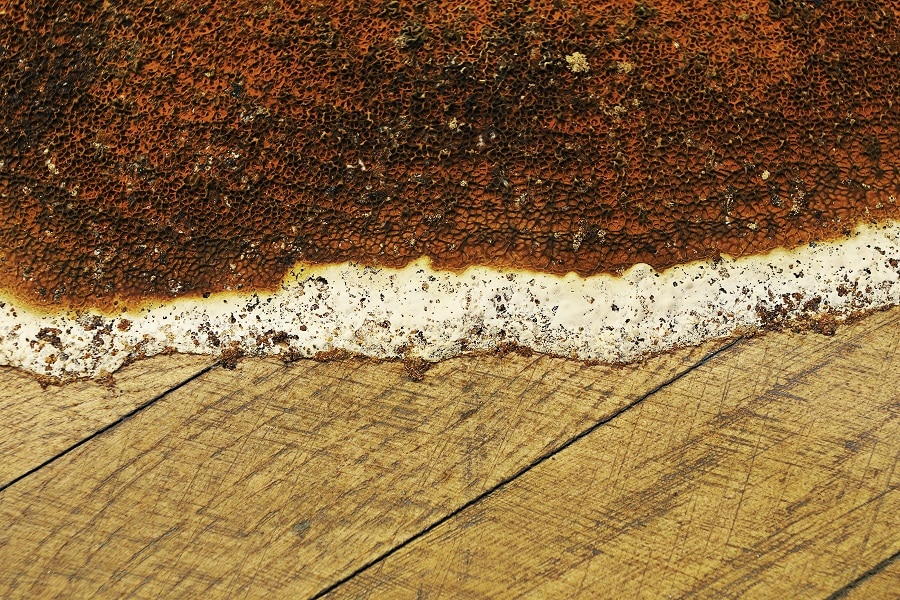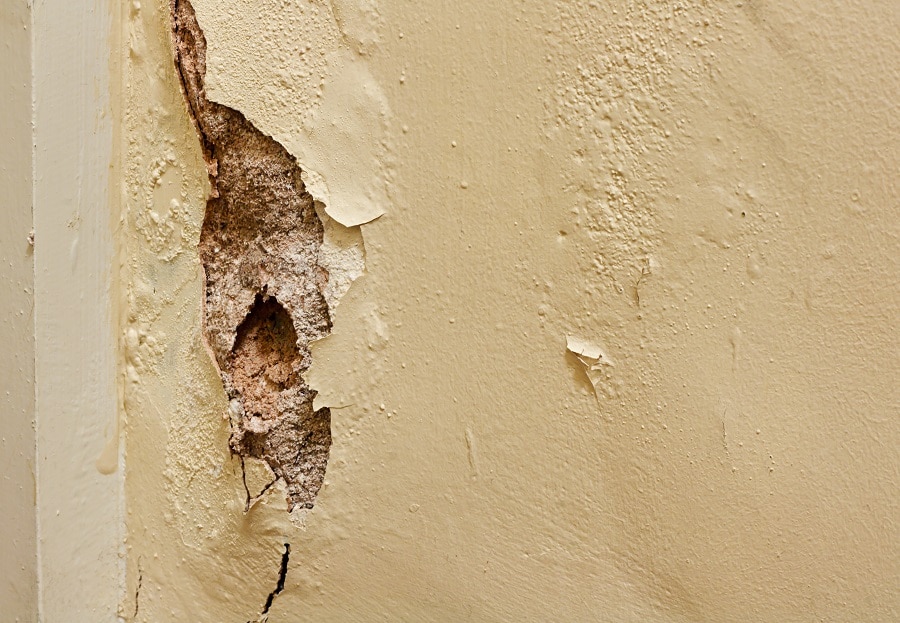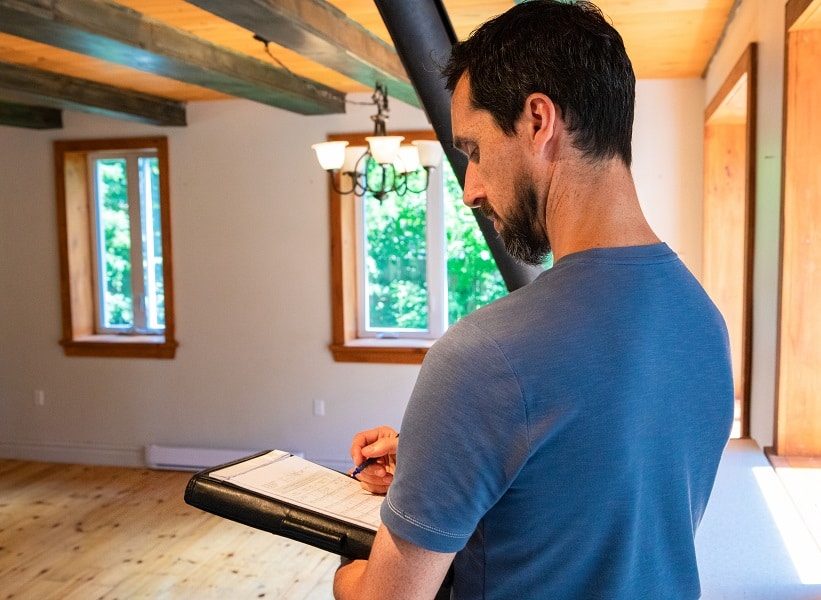What is dry rot?
Dry rot is a common term for various kinds of wood-decay fungus. Wood is broken down by Sporocarp (fungi), as the Mycelium consumes the wood, dry rot occurs resulting in fine dust particles, decomposition of the wood and dry rot bloom. Dry rot is caused by fungal spores which require a suitable place to land and start their colonies before spreading through the underlying wood. Many of these spores can be found in soil and old wood already affected by dry rot.
It also means that dry rot cannot live in so-called “humidified” lumber that is kept at 15% moisture with a wetted surface. While Dry Rot can be harder to spot, it is potentially more damaging than wet rot. It sometimes happens where you’re not looking. It could be under the plaster, beneath your floorboards, or even in your loft. As a homeowner, it’s a good idea to understand the telltale signs of dry rot so you can act fast.
Our Guarantee
- upto 30 year guarantee
- customer focused team
- 20 years combined experience
- portfolio of satified customers
- attention to detail
- Construction line accreditation
- public liability insurance
- CHAS accreditation
What is the difference between dry rot and wet rot?
Dry rot and wet rot have different spores/species, meaning that they look different. The biggest difference, however, is that wet rot needs significant moisture to spread. Contrarily, dry rot does not spread as easily as wet rot. This is because it uses the capillaries within timber rather than mycelium that typically forms the basis of a Dry Rot infestation. Dry rot is extremely destructive and spreads quickly through a house, even retaining its ruinous effects if the room has been previously treated for damp or wet rot. Wet rot can occur on drier timber, but it generally spreads further when it becomes wet.
Call Our Sussex Damp Experts team now for quote, consultation and advice:
Call on 01273 257 765.
What are the causes of dry rot?
A lot of fungi species cause dry rot. The most commonly found in the Bognor-Regis is Serpula Lacrymans. If it’s not handled fast enough, it’s going to spread over your house, brick and mortar, and even plaster. It can have a major negative impact on the structural integrity of timber, and also the integrity of your home. Dry rot attacks when moisture levels are too high in your timber. This will attract the fungus that will use this moisture to extract nutrients. The word “dry rot” is used to differentiate between “wet wood” and “dry wood rot.”
Wet timber fodder on a dry rot. These hyphae need only 20% moisture to survive, while fungal spores need more than 30% moisture to generate hyphae after this. These hyphae can grow into a fungal body called a mycelium, which can also spread to find more timber in stone and brick. H2O, Hemicellulose and cellulose can be stripped from the timber by this fungus, leaving behind a fragile structure of the original wood. You’ll need a private survey to tell if your wood deterioration is caused by dry rot or another kind of fungus. This is important as the remedies for these damages can vary based on the actual cause.

The dangers of dry rot in Bognor-Regis
Dry Rot Effect on your Property
Dry rot can cause irreparable damage to wood and other materials in your home. As Dry Rot breaks down your properties structural timber, it will eventually cause it to crumble. But a slow leak could expand over time, and in extreme circumstances, cause various parts of your home to fall. Dry rot, however, does not attack your brick or stone; it only travels across it. Hence, regular checks are essential.
Dry Rot is one of the most destructive and dangerous pests found in homes, which requires urgent treatment. When you know a dry rot problem is imminent, call in the experts at Dry Rot Experts and Rescue. If you think you might have a problem with dry rot, get a survey from Sussex Damp Experts today.
Dry Rot Effect on Your personal health
Actually it is not the fungus that causes the damage. Regrettably, if dry rot does occur, the structural damage may be extensive to your health. This is particularly hazardous for the adults, children and people with respiratory conditions.
What are the Warning Signs of Dry Rot?
The sooner you find dry rot, the less time and money you need to waste on treating it. A full assessment is recommended if you experience any of the following signs/symptoms.
-
The beginning of the dry rot cycle
The spores are carried by wind. If they are carried onto timber, they will begin to feed on it. When the wood has enough moisture, it allows fungal spores of Armillaria mellea to germinate and create hyphae, if the timber is giving them enough nutrients to do so. As these hyphae expand and eat, they may enter a spider web-like array called mycelium. Mycelium may be white or light grey. Mycelium is mostly found between property’s bricks, mortar and plaster and can also try and spread into timber greatly.
-
Your timber is damaged.
You will see that the core of your timber has become soft and dry. This could lead to the collapse of your timber. You might notice rot in new wood darkening your wood color. Scientists have discovered that dry rot can lead to something called cuboidal cracking. The Cuboidal Cracking is a natural timber feature that affects all timber species and can break the timber up to 50 mm width. The fungal deterioration will also spread further into the wood, causing hyphae the white fungal growth. Hyphae is a slime-mold and is an early symptom of dry rot.
-
Your timber will smell.
If your wood is infected by dry rot, it will have a different, fungal smell. This can occur even if you can’t see a dry rot outbreak. The smell of mold, however, is not a definite indicator that there are no signs of dry rot.
-
Your timber will have fungus bodies on it.
Dry rot is the most noticeable kind of wood rot and one of the final stages of fungal attack. Mushrooms such as fruiting bodies might start to join themselves with your timber. If it becomes dry, dry rot can no longer feed on the wood so it will pop out spores instead.
-
Your timber will have spore dust.
Spores related to dry rot do not just occur in timber affected by dry rot. If you are seeing splotches of rusty coloured dust accompanying decomposed spores, it could be a sign of dry rot. Fertile bodies supply this spore dust in the final cycle of dry rot.
Dry Rot Treatment in Bognor-Regis

Only when moisture levels are over 20 percent will a dry rot infestation occur. The first defense to eliminate the presence of fungus lies on controlling the levels of moisture in your living space or property. You are now in charge of the moisture levels. For your dry rot treatment, meet a professional.
Sussex Damp Experts can help you with the removal of infected timber and any remedial work. Affected timber removal should be handled by a professional. The required treatment lies on the knowledge of a dam proofing expert. Either injected into the timber, or cover the timber surface can timber be treated. There are plenty of options for defensive treatment. If inhaled or injected accidentally, these chemicals may cause negative side effects because they require a specific attention.
A professional can determine if your timber needs Boron rods. Boron is a hazardous mineral, so it is important to wear protective clothing whilst damp proofing your basement. Due to their specialist experience and thorough inspection, our damp experts will be able to identify and address any damage that dry rot may have caused in your home. Dry rots can be a severe issue and need to be treated right away. If dry rot is not treated promptly, it can spread across your property and do real harm. Our Sussex Damp Experts team will work with you to implement a suitable treatment that addresses your problem effectively and efficiently. Please don’t waste time. If you spot any signs of dry rot, call us immediately on 01273 257 765 to protect your home.
How can you prevent dry rot damage in Bognor-Regis?
The first step of treating dry rot is prevention. Any wooded areas of the house that traps enough water and is subject to humidity/moisture ingress can result in a dry rot infestation. Here are some practices that will prevent them from forming: Ensure that there are no leaks in your living space. Provide proper, sufficient ventilation.
Ventilate correctly and envelop the attic. Oxygenate crawlspaces very well. Seal basement and crawlspace floors to reduce ground moisture. Check all wall and roof flashing to ensure water is being directed properly. Keep the sinks and downs clear. If a “wet” system is used, search for the filling/heating leaks. The easiest way to mitigate the chance of dry rot is to decrease moisture levels, because of the moist conditions needed for dry rot fungus to feed and germinate. For instance, if you plug the leak, you prevent water from flowing into the pipe and causing future damage.
Speak to a Dry Rot specialist in Bognor-Regis
We are equipped to fix any wet or dry red issues that concern your property or your house. We will perform a full damp survey of the property and give you a free estimate before we start any work. For some years, we have assisted thousands of Bognor-Regis homeowners with their damp problems, and we will support you as well. For a free survey and quote, call us on 01273 257 765. A qualified Plasterboard dry rot expert will diagnose your home to determine what the extent of the infestation is This allows us to give impartial recommendations and advice on the type of treatment you will need.

All of our surveyors are fully qualified and will be able to identify everything from Dry Rot to moisture ingress, including the solution, and give you a fair cost for any remedial works. Dry rot is a long term problem, and can get worse if left unchecked, if you notice any signs of damage on your fence, it is better to contact our contractors right away. The South Damp Proofing services will assist you in solving your dry rot dilemma by e-mail or calling the phone 01273 257 765.
FAQ
Should dry rot be restored or replaced?
A certain level of dry rot can be repaired, but whether the damaged areas provide the house with structural stability, such as beams and joints, or even flooring, it is not recommended. Replace the wood in such a situation instead of repairing it. Whether you restore or rebuild the wood, it is better if you avoided the conditions that caused the rot to flourish in the first place or risked it coming back. Your roof leaks, broken gutters, or downspouts, plumbing leaks or insufficient ventilation should be inspected when considering a roof moisture accumulation You may consult a specialist to find and repair the problem.
Will you be able to treat my Dry Rot problem effectively?
With our expertly trained surveyors and specialists, a dry rot problem can be treated, rectified, and your timber can be protected for the future.
How do I discover how far Dry Rot has spread?
If you have traced the dry rot fungus quickly or not, a professional will identify the source of the problem. They will be able to trace the fungus in the different masonry and plaster from which it has spread.
How much can dry rot widen?
Dry rot spores can spread in anyplace with the right environmental settings. The reason is that they are carried in the atmosphere. If your timber has a moisture content of around 20%, and if it is in the open air, these conditions are attractive to dry rot fungus. This suggests that fungus groups can disperse to multiple materials. If dry rot is spreading across masonry and plaster, and if it reaches more timber to feed off where the timber is moist. It can widen further. Dry rot fungus needs five things to survive: the right temperature, drive rot spores, moisture, oxygen, and the food source. In any home in Brighton most of this is present.
Will dry rot stretch?
What should I do to control dry rot?
First identify the reason for your timber moist before solving it. A different treatment shall be given if the reason for your timber moisture is outside.
What are the effects of living dry rot unchecked?
Dry rot is the most insidious form of moisture that can infest property and cause permanent damage to the building if left untreated. Sometimes, once the harm is already done due to the places in which the problem is likely to be the presence of dry rot does not come to light.
Is dry rot stringent?
Dry rot can be particularly common in wooden properties, so it is essential that early signs of dry rot are identified before the damage becomes too severe.
How am I meant to know if I have dry rot?
A timber survey will assess how your timber is affected by being exposed to moisture. Later on, fruiting bodies and mycelium will be noticeable in the drive rot life-cycle.
Where can dry rot grow?
Dry rot attacks and rots timber that’s been in contact with water for a long period of time. Although it can often be mistaken for other problems in its early stages, it is important to seek advice. In every structure, both old and new, dry rot can grow. The reason being that it is caused by moisture and wetness that happen anyplace. Dry rot can be caused by leaks or weather, meaning the type of property does not affect it.




